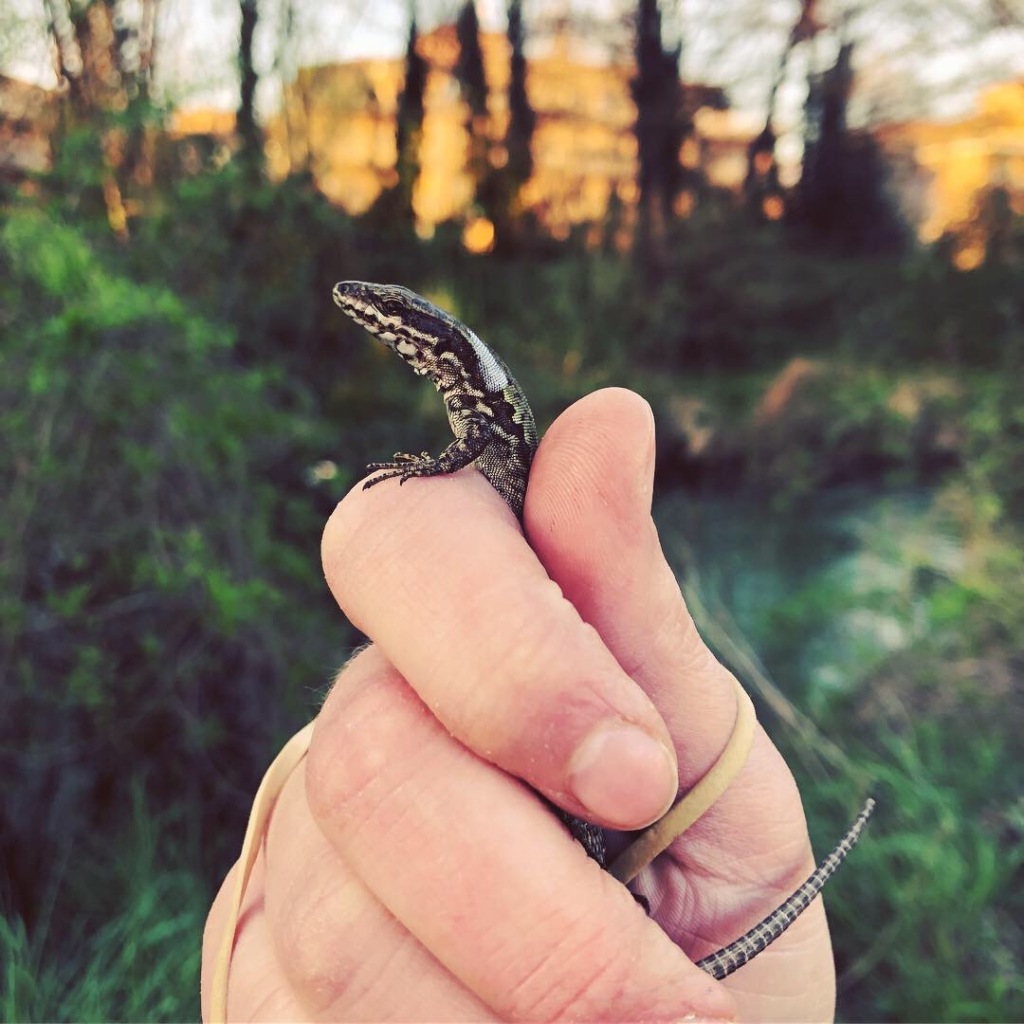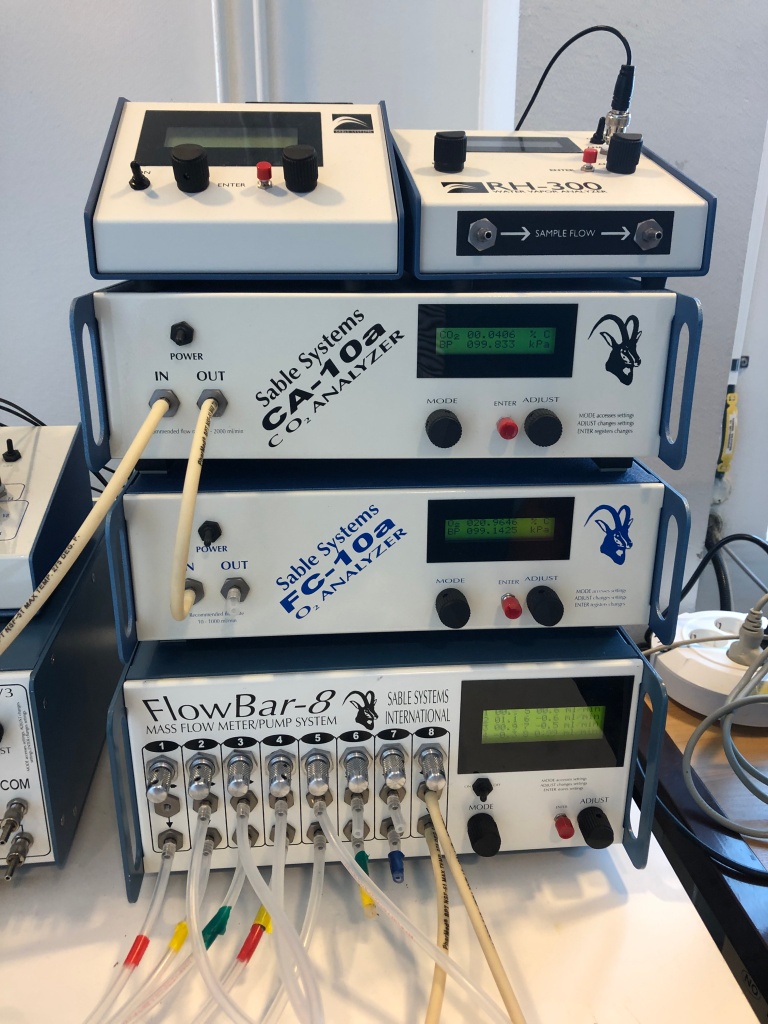Being in (semi) lockdown in Sweden has made me nostalgic for field work. Last April in sunny Italy our field team (Mara, Lu, Tobias, Geoff & Nathalie) collected over 100 wall lizards (Podarcis muralis) from sites near Rome. We sampled brown and green phenotypes across low to high altitude ranges and brought them back to the lab in Lund, Sweden. The field work was fantastic – and not just because of the post-work gelato in the evenings 🙂
I am now back in the lizard room, collecting clutches from females and planning the next set of experiments. It is not quite as scenic as last year but the lizards are doing a fantastic job, providing lots of eggs for us to test for convergence in maternal effects.
Last year I was able to measure metabolic and developmental rates in hundreds of eggs that had been incubated across warm and cool temperature regimes. I also analysed egg yolk for thyroid hormone analysis in collaboration with Suvi Ruuskanen in Turku, Finland.
I am still continuing with the analysis but so far the results look promising – we are seeing differences in maternal investment and developmental thermal physiology across populations from low – mid – high altitude and between green and brown phenotypes! We think these population-level differences may have allowed Podarcis muralis to expand its range into high altitude and non-native high latitude regions.
This year we continue with thermal physiology measures, manipulating the variance in developmental temperatures using programmable incubators to see how embryos from different altitudes and parental phenotype respond in their thermal physiology.










